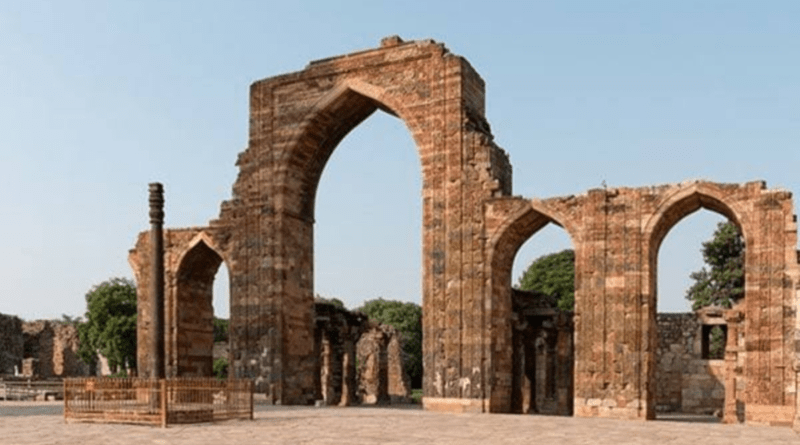Let’s now know The tale of Delhi’s iron pillar that defies rust.
Visitors to Delhi’s medieval city almost never overlook the famous Qutub Minar and the unrusted iron pillar located in the same complex.
Visitors were able to wrap their hands around the pillar until the government erected an iron fence around it twenty years ago. It was a common belief that whoever could wrap their hands around the pillar with their backs touching it would be blessed with good fortune.
The Qutub Minar was constructed in the early 13th century. The iron pillar, meanwhile, is thought to have been constructed seven or eight centuries earlier. Because the iron pillar doesn’t rust, scientists and history buffs are undoubtedly fascinated by it.Many people consider this iron pillar to be the best illustration of India’s metalworking prowess since antiquity.
The iron pillar is thought to have been ordered in the fourth century AD by Chandragupta II, also referred to as Vikramadityan. Historians disagree over Chandragupta II’s Vikramadityan ancestry, nevertheless. Historical evidence points to the removal of the iron pillar occurring at least three times. It’s interesting to note that the pillar was originally placed somewhere else. The pillar’s inscription claims that it was once perched atop the Vishnupadam hills.
The Tomar monarchs, who ruled Delhi in the eighth and ninth centuries, are credited with placing the pillar where it is today. It was, incidentally, the first time the pillar had been taken down.There are many fascinating myths about the iron pillar. The pillar was thought to be resting atop the head of Vasuki, the serpent king. According to mythology, bloodstains were discovered by the Tomar king when he uprooted the pillar to see if it rested on Vasuki’s skull.
This was thought to be the second time the pillar had been taken down from its original position. But not very long afterward, the Tomar dynasty fell. Another widely held misconception is that a pillar’s length is equal above and below ground.
The pillar was removed by renowned archaeologist Alexander Cunningham, who conducted numerous excavations in India throughout the 1800s, to verify the veracity of the “rumor.” But beneath, the pillar was only twenty inches long.




